This article presents approaches and techniques used in the classroom to introduce new vocabulary items to the 5th –grade students. The activities are divided according to the four skills – listening, writing, reading and speaking
Approaches and Techniques in Teaching Vocabulary Items to 5th Graders
Învăţământ gimnazial | Limbi moderne
Propus de: crenguta_13 | 29.02.2016 09:46 | Revista cadrelor didactice nr. 23/2016 | 673 vizualizări
Approaches and Techniques in Teaching Vocabulary Items to 5th Graders
Prof. Crenguţa GRĂDINARIU
Şcoala Gimnaziala Tămăşeni
Tămăşeni-Neamţ
Summary:
This article presents approaches and techniques used in the classroom to introduce new vocabulary items to the 5th –grade students. The activities are divided according to the four skills – listening, writing, reading and speaking
Key words: vocabulary, skills, techniques.
I will give in this article several examples of activities that can be used in the 5th grade when teaching clothes. For introducing the new items or for revising them it is a good idea to ask students to cut a page of a newspaper in the shape of a hat, gloves, trousers etc. Then, using a washing line and clothes pegs, the teacher asks students to hang their projects on the washing line. The students repeat the names of the clothes after the teacher, in chorus, then individually. After introducing the clothes related vocabulary the teacher can ask students to close their eyes, while he/she hides some of the clothes. A few seconds later, s/he asks them to open their eyes and name the missing clothes.
This warm-up activity always has a great impact on my students as they seem to have a lot of fun and, at the same time, they produce and practice the vocabulary I am interested in an enjoyable context.
Games
Games play an important role in the classroom. The atmosphere is relaxed, the students enjoy what they are doing and in this way the learning process is more efficient and long lasting.
1) One of these games is the “Chair switch game”: the teacher puts some chairs in circle, one less chair than there are students. One student stands in the middle. All students sitting down ask at the same time:”what are you wearing?” The student in the middle says “I’m wearing a pair of jeans”, for example. Each student wearing jeans must get up and change chairs and the one standing must answer the next “What are you wearing?” question.
2) Another game loved by students is the “Exchanging clothes game”. Students are divided into two teams. While one team waits outside the classroom, the other students have to exchange clothes among themselves. After 5 minutes, the other team returns and students try to detect as many changes as possible: “This jumper is not yours, it’s Peter’s”. One point is given for each correct response. Afterwards, the teams change the roles and the game continues. At the end, the team with more correct responses is the winner.
3) When teaching clothes vocabulary, it is great fun to bring in a big bag of old ( but clean!) , adult sized clothes as kids just love to play dress up. Put the bag in the middle of the room and shout ”Put on a T-shirt!” Students race to the bag, pull out a T-shirt each and put it on. Continue with all the other clothes vocabulary you are teaching.
These are efficient games because they encourage students to recall words and, preferably, at speed through guessing and categorising.
However, since many word games deal solely with isolated – rather than contextualized - words, and often require only shallow processing on the part of the student, they should be used judiciously. Too often games are used to plug holes in lessons which could more usefully be filled with language-rich talk. Nevertheless, the fun factor may help make words more memorable, and, like it or not, a competitive element often serves to animate even most lethargic students.
Listening
The listening activities are meant to check the students’ attention in class as well as their ability to understand spoken language. Usually my students pay a lot of attention to this type of exercises and enjoy the pauses in the tape to practice their own pronunciation and also motivates them to join the rest of the lesson and be more active than they normally do. On the other hand there are a few students with visual abilities for whom the listening activities arise difficulties as they feel more comfortable if they have the written text in front of them so when hearing again the tape I provide them with the tapescript in order to encourage them to develop this skill as well.
1) Students look at the pictures in their textbook (Snapshot-Starter), while listening to the tape and they check the vocabulary in pairs. The teacher plays the tape again and pauses after each person’s description allowing time for students to identify the models and the clothes they are wearing. Then, the teacher elicits the items of clothing from the students asking:
Teacher:”What is Cameron wearing?”
Student:”He’s wearing black jeans, a green cap, etc”.
At this stage the teacher can elicit one item from each student. After having played the tape, put students in new pairs. They take it in turns to describe one of the models as fully as possible.
Writing
My students, as all students today, are not so fond of writing so the mission of the teacher is to provide students with activities which should be interesting and enjoyable and the difficulty of the exercises should be gradual so that the students should not be frustrated and feel confident that they can solve such a task.
1) Odd-one-out. Write the first letter in the box and make another word:
trainers, boots, shirts, shoes
grey, pink, black, polite
old, leather, cotton, wool
T-shirt, sweat-shirt, pullover, rucksack
trousers, tennis-ball, football, basketball
2) List the words under the correct headings: thick, purple, T-shirt, pink, earrings, sweater, orange, tracksuit, long, top, baggy, large, bag, short, tight, yellow, tights, belt, black, jeans.
Adjectives Colours Clothes Accessories
large black jeans belt
3) Correct the following sentences:
a). When Mary goes to a concert she wears a black hat and a pair of trainers.
b). When she goes to school she wears a long dress and a pair of slippers.
c). When she goes on a trip she wears a white blouse, an elegant skirt and her new coat.
d). In the gym she wears boots and a winter coat.
Reading
Reading activities seem to be the most enjoyed by my students as they feel they have control over the language. However, some students feel embarrassed when they have to read because they do not feel very confident in their reading abilities and they fear the others might laugh at them but they are very willing to translate the texts or offering support when explaining the meaning of the unknown words.
For example, in one of the activities in Snapshot-Starter the teacher tells students that they shouldn’t worry about any new vocabulary and then sets some general questions: “Does Leo buy expensive clothes?”, “Does Anna like baggy clothes?”. After they read the texts and answer the teacher’s questions, students read the texts again and in pairs they discuss the possible meaning of the vocabulary items listed: baggy, long sleeved, zip-up, tight, slogans. Weaker students can check the meaning of the new words using a dictionary and they may even ask for teacher’s help. The teacher can explain the new words by showing to students’ clothes, miming or even giving the Romanian equivalent. As a follow up activity the pupils can be asked if they have the same tastes as Leo and Anna do.
Speaking
By doing the following speaking exercises my students are exposed to real life situations. Where the time and the resources allow, I sometimes take my students out to a shop, let them play the shop assistant and the customer, record them on a tape and discuss their “performance” in the next class, after watching the tape together.
In order to make common lessons more interesting and attractive the teacher can organize a fashion parade for the students. Because in Romania in some schools the uniform is not compulsory and students wear their own clothes, this game has a great success among students. Students, boys and girls, walk on the “catwalk” presenting at the same time the clothes they are wearing:
Student 1:” I am wearing a denim green skirt, etc.”
Student 2: “I am wearing a pair of black trousers, a brown sweater, etc.”
Another activity which has proved its usefulness is to use my own pictures and clothes to elicit and drill, chorally and then individually, positive and then negative reactions. The question “Do you like this skirt/these jeans/this pair of shoes?” is taught. The teacher practices the first picture as an example with the whole class, then in pairs, students look at the pictures and take it in turns to ask and answer questions in pairs:
Student 1:” Do you like this jacket? / What do you think of this jacket? / Is this jacket OK?”
Student 2:” I don’t like it. It’s too big/ It doesn’t suit you.”
If they want they can give positive reactions to these clothes.
At this age, fashion and shopping is a favourite topic for discussion, both for boys and girls, and sometimes their answers can be quite surprising. The class is divided in groups and the students are asked to answer the questions in ex 5, page 83 in Snapshot and then to find one similarity and one difference between themselves and those they talk to. One or two students in each group may report to the whole class.
Talk about your taste in clothes:
What sort of clothes do you like wearing to school?
Do you like tight clothes or baggy clothes?
Do you wear clothes with slogans on them?
Do you spend a lot of money on clothes?
Do you wear earrings ( or an earring)?
What’s in fashion among your friends?
As homework assignment students could write a short paragraph based on exercise 5 about what is in fashion among their friends.
The following test was applied to assess students’ vocabulary acquisition related to clothes:
the 5th grade
TEST
1. Copy and complete the word puzzle with the names of the items of clothing in the pictures. What is the mystery item, number 8?
2. You and a friend are going to a party. In your notebook, write a conversation in which you discuss what you are going to wear.
The results are as follows:
80.95% of the students proved they acquired the vocabulary taught to them at least at a satisfactory level which, again, is a very good percentage taking into consideration the fact that starting from this grade students with special needs receive no further support from especially – qualified staff and I have to work separately with them on less difficult tasks than the general level of the classroom.
Bibliography:
1. McCarthy M.- “Vocabulary”, OUP, 1990.
2. Thornbury S.- “How to teach vocabulary”, Harlow:Longman, 2002.
3. Allen J.- “Words, Words, Words. Teaching Vocabulary in Grades 4-12”, Portland: Stenhouse Publishers, 1999.
4. Allen V. F.- “Techniques in Teaching Vocabulary”, OUP, 1983.




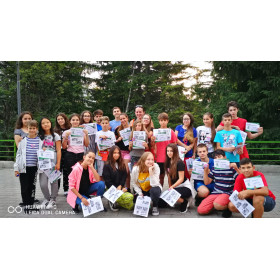
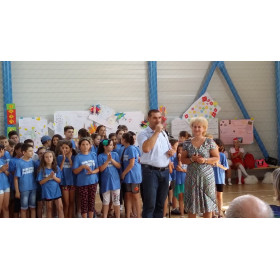
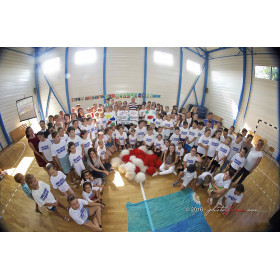
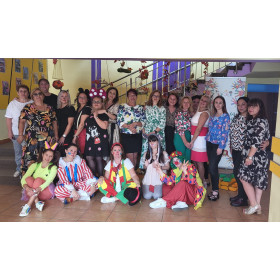
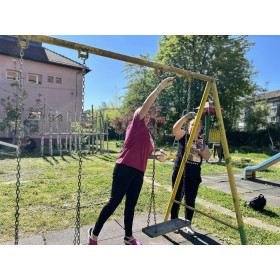
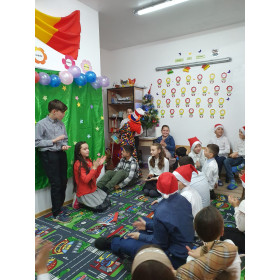

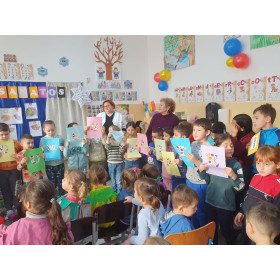
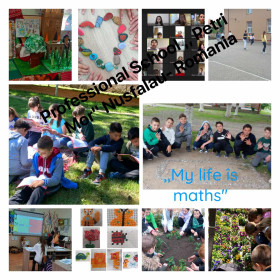





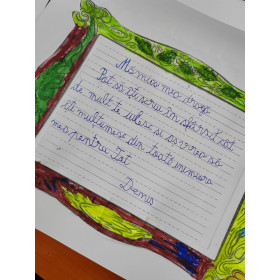



Comentarii (0)
Nu există niciun comentariu
Autentificaţi-vă pe site pentru a putea publica un comentariu.